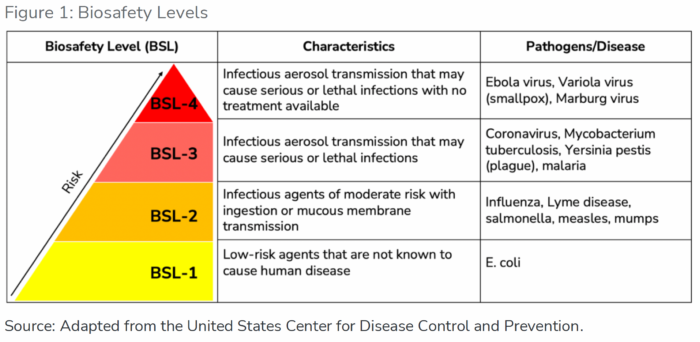What are Biosafety levels?
Biosafety levels (BSL) or Risk Groups, range from 1 to 4, 1 being the lowest level or risk group and 4 being the highest level or risk group. Citizen science, education and community labs will operate in level 1 in 99% of the times since this is the level that is the safest. In you work at Level 1, it means you use only microorganisms that are non-pathogenic - not harmful to humans or animals as long as you respect basic lab safety. In North America, you can do these experiments without government approval.
You can learn more about lab safety in our Safe Science Practices blog post and in all our instruction manuals and the Zero to Genetic Engineering Hero book.
|
Biosafety Level 1 organisms are not infectious and therefore do not pose a threat to an healthy individual*. This is why you are able to use this bacteria at home or in a classroom and don’t require a large lab that is monitored by the government. Level 1 does require basic safety procedures such as wearing gloves. Learn more about Safe Science Practices.
* If you are immunocompromised, you may need to use special precautions on top of the safe science practices. Always speak to your doctor first!
|
|
Biosafety Level 2 organisms can be harmful to an individual but are easy to control, and do not spread easily - this is the flu, Hepatitis A, B, and C viruses, human immunodeficiency virus (HIV), pathogenic strains of Escherichia coli and Staphylococcus, Salmonella. To do this work, you need a Government-approved lab space that includes specific equipment to contain the organisms and work in. You also need to follow specific lab safety procedure that go beyond wearing gloves.
|
|
Biosafety Level 3 and 4 use microorganisms that are infectious and would likely cause death if you came into contact with them. From Ebola to COVID-19, these are not microorganisms you want to work without heavy protection.
|

Biosafety Levels figure from Caroline Schuerger, Sara Abdulla, and Anna Puglisi, "Mapping Biosafety Level-3 Laboratories by Publications" (Center for Security and Emerging Technology, August 2022). https://doi.org/10.51593/20220019


